- Home
- Julie Smith
New Orleans Noir
New Orleans Noir Read online
This collection is comprised of works of fiction. All names, characters, places, and incidents are the product of the authors’ imaginations. Any resemblance to real events or persons, living or dead, is entirely coincidental.
Published by Akashic Books
©2007 Julie Smith
Series concept by Tim McLoughlin and Johnny Temple
New Orleans map by Sohrab Habibion
Cover photograph ©2006 David G. Spielman, from his book Katrinaville Chronicles: Images and Observations from a New Orleans Photographer.
ePUB ISBN-13: 978-1-936-07039-8
ISBN-13: 978-1-933354-24-8
ISBN-10: 1-933354-24-0
Library of Congress Control Number: 2006938151
All rights reserved
Akashic Books
PO Box 1456
New York, NY 10009
[email protected]
www.akashicbooks.com
ALSO IN THE AKASHIC NOIR SERIES:
Baltimore Noir, edited by Laura Lippman
Brooklyn Noir, edited by Tim McLoughlin
Brooklyn Noir 2: The Classics, edited by Tim McLoughlin
Chicago Noir, edited by Neal Pollack
D.C. Noir, edited by George Pelecanos
Dublin Noir, edited by Ken Bruen
London Noir, edited by Cathi Unsworth
Manhattan Noir, edited by Lawrence Block
Miami Noir, edited by Les Standiford
San Francisco Noir, edited by Peter Maravelis
Twin Cities Noir, edited by Julie Schaper & Steven Horwitz
FORTHCOMING:
Bronx Noir, edited by S.J. Rozan
Detroit Noir, edited by Eric Olsen & Chris Hocking
Havana Noir (Cuba), edited by Achy Obejas
Lagos Noir (Nigeria), edited by Chris Abani
Los Angeles Noir, edited by Denise Hamilton
Paris Noir (France), edited by Aurélien Masson
Queens Noir, edited by Robert Knightly
Rome Noir (Italy), edited by Chiara Stangalino & Maxim Jakubowski
Wall Street Noir, edited by Peter Spiegelman
To those who took care of us:
Janet and Steve Haedicke, the first week;
Kiley, Molly, and Tory McGuire, the next month;
and Debra Allen, who saved the cats
Acknowledgments
Thanks have to begin with Tim McLoughlin, who started the Akashic Noir Series with Brooklyn Noir, and Johnny Temple, who’s turned it into a cultural phenomenon; and then move quickly to the seventeen brilliant authors who agreed to participate in this one. Working with all of you has been a joy.
And so many others helped in so many ways: Laura Lippman, Vicky Bijur, David Simon, Denelle Cowart, Chris Wiltz, Greg Herren, David Spielman, Linda Buczek, Jack Willoughby, Captain Jeff Winn, Paul Willis of the Tennessee Williams Festival, Ron Biava of the New Orleans Public Library, Lee Pryor, and especially Mary Alice Kier and Anna Cottle, who put some serious time in, just as a favor. My most heartfelt thanks to all. Plus a second thank you to Johnny Temple for so generously sharing in our recovery.
TABLE OF CONTENTS
Title Page
Copyright Page
Introduction
PART I: BEFORE THE LEVEES BROKE
TED O’BRIEN Mid-City
What’s the Score?
PATTY FRIEDMANN Uptown
Two-Story Brick Houses
TIM MCLOUGHLIN Irish Channel
Scared Rabbit
OLYMPIA VERNON University District
Schevoski
DAVID FULMER Algiers
Algiers
LAURA LIPPMAN Tremé
Pony Girl
JERVEY TERVALON Seventh Ward
The Battling Priests of Corpus Christi
JAMES NOLAN French Quarter
Open Mike
KALAMU YA SALAAM Lower Ninth Ward
All I Could Do Was Cry
BARBARA HAMBLY The Swamp
There Shall Your Heart Be Also
PART II: LIFE IN ATLANTIS
MAUREEN TAN Village de l’Est
Muddy Pond
THOMAS ADCOCK Gentilly
Lawyers’ Tongues
JERI CAIN ROSSI Bywater
And Hell Walked In
CHRISTINE WILTZ Lakeview
Night Taxi
GREG HERREN Lower Garden District
Annunciation Shotgun
JULIE SMITH Garden District
Loot
ACE ATKINS Loyola Avenue
Angola South
ERIC OVERMYER Faubourg Marigny
Marigny Triangle
About the Contributors
INTRODUCTION
WRITING UNDERWATER
Before Hurricane Katrina, New Orleanians used to joke about not really being a part of America, being, in fact, a tiny Third World country unto ourselves. And proud of it, we used to say.
The layers of irony in that idea become clearer—and more numerous—with each day that passes since our city was inundated and, well … pretty much leveled, except for the skinny strip along the river where we’re all hunkered now. (At least those of us who aren’t still trying to get home from Houston or haven’t packed up and moved to North Carolina.)
The Bubble, we call it, or the Isle of Denial, but some days the denial just doesn’t work and neither does the Prozac, and we get all liquid in the eyeballs and have to pull ourselves together.
Little more than a year after the storm, we’re still floundering, still in shock, still wondering how to write about such a momentous, life-changing, historic, downright biblical tragedy. We’ve lost so much that meant so much, and we’re struggling so desperately to hold onto what is left. How to convey something like that?
Last Christmas, when we were all just barely home, just starting to get our bearings, a librarian at Tulane University told me she’d already bought twenty-five post-Katrina books for her library. “Nonfiction?” I asked.
“Of course,” she said.
She must be up to a hundred by now, but so far as I know, only one post-K novel has been published at this writing. Though I have no doubt hundreds are in the works Everyone is struggling to find a way to tell his or her story, to tell it in such a way that those who didn’t go through this particular bewildering and disorienting loss can understand how it relates to the larger picture, how universal a thing it really is, this destruction and this potential for destruction, this aching misery, this indifference on the part of the rest of the country. Never have so many writers in such a small area become so passionate, yet so desperate, all at the same time. We are at once immobilized by the task and inflamed by it.
So a short story is really the perfect way to stick a toe back in the water. Whether set pre- or post-K (these are the terms we use down here), the stories herein, to my mind, are particularly passionate. Some of the post-K ones will sear your eyeballs. And yet … so will some of the historic ones.
Patty Friedmann’s tale of mean girls at an Uptown private school may well be the most chilling story ever set at a kids’ pajama party. The nineteenth-century yarn by Barbara Hambly and David Fulmer’s “Algiers,” set a century ago, provide ample evidence that, so far as crime is concerned in this French city, plus ça change, plus c’est la même chose. We’ve always had our con artists, our gamblers, our two-bit hustlers, and, God knows, our hookers and femmes fatales. We’d hardly be ourselves without them.
Alas, we also have our racists. Jervey Tervalon offers a peek into the discrimination of the past in his story of two wrangling priests, one a bigot and proud of it. Ted O’Brien also tackles the issue of race—with all its tangles and contradictions—in a twenty-first-century mixed neighborhood.
James Nolan’s wry and wicked �
��Open Mike” leads us on a careening tour of the underside—both past and present—of that gaudy world known as the French Quarter; the part the tourists haven’t a clue about. Laura Lippman treats us to an insider’s look at the Tremé Mardi Gras, one of the city’s most colorful, while providing so hair-raising a take on masking that it ventures into horror territory.
Before reading Tim McLoughlin’s worldly-wise Irish Channel story, be sure to pour yourself a couple of fingers of Irish whiskey. You’ll need it—especially if you next move on to Olympia Vernon’s unnerving tale of love gone wrong in the University District.
The Lower Ninth Ward, perhaps our most famous neighborhood of late, was always a tough place, but it had its tender side too, its neighborly, gentle, almost maternal side, the side that makes people so desperate to go back no matter what—no matter that it mostly doesn’t even exist anymore. Kalamu ya Salaam skillfully evokes the complexity of its residents’ lives.
Not surprisingly, almost half the writers chose to make their stories contemporary. And it’s a good choice, I think. For this is what we live with now—this is the new New Orleans. This messy, ugly, often violent, confusing, difficult, inconvenient, frustrating post-Katrina world.
In “Muddy Pond,” Maureen Tan wades into a part of the city most of its black and white citizens are only vaguely aware of, and almost never visit—Village de l’Est in New Orleans East, where the church called Mary Queen of Vietnam is the dominant social organization. Unless you count the gangs.
The Masson boys in Thomas Adcock’s “Lawyers’ Tongues” are pure New Orleans—one a prosecutor, the other a petty thief. They’re Gentilly folks who moved up from the nearby St. Bernard project under the watchful eyes of certain Aunt-tees only too eager to see them stumble.
Jeri Cain Rossi’s haunting tale of frustration, despair, and desperation—and heat!—in the very bohemian Bywater will make you long for a refreshing dip. Preferably not in the river.
A little known fact: Lakeview, just the other side of the now-famous 17th Street Canal and once the home of well-off white folks, took on just as much water as the Ninth Ward. But since the houses were newer and stronger and mostly brick, it fared better. So unlike the Lower Ninth, it now looks more like a Western ghost town than a field where the gods played pick-up sticks. “Night Taxi,” Christine Wiltz’s angry, gritty portrayal of latter-day carpetbagging mines those spooky ruins for nasty truths.
Several years ago, the Utne Reader named the Lower Garden District “the hippest neighborhood in America.” So naturally plenty of gay people live there and some, just as naturally, have lovers’ quarrels. Let’s hope most are resolved more peacefully than the one in Greg Herren’s “Annunciation Shotgun,” a classic noir nightmare in which stepping just over the line opens the narrator’s personal Pandora’s box.
My own story of looting in the Garden District proper (several feet and a planet away from the Lower Garden District) seeks to remind us that we New Orleanians have no monopoly on taking advantage of our fellow humans.
No fewer than six of our intrepid contributors (including our cover photographer) rode out the storm here—Christine Wiltz, who finally left when the looting got nasty; Jeri Cain Rossi, who got out by commandeering a van (along with five other people, five dogs, and a cat); James Nolan, who escaped with musician Allen Toussaint in a stolen schoolbus; Patty Friedmann, who got trapped in her Uptown home, hitched a rowboat ride to her sister’s also flooded house, and had to wait four more days for a second rescue; Olympia Vernon, who was marooned for days in Hammond, Louisiana with no gas, food, or electricity; and photographer David Spielman, who took shelter in a convent with a group of cloistered nuns.
But one of us actually came here voluntarily that week. Ace Atkins blew in from Mississippi on a magazine assignment, and saw things that … well, that he injected into his powerful story, “Angola South,” along with the raw emotion of one who’s seen things nobody should have to see.
Last, Eric Overmyer looks through the jaundiced eyes of an Eighth District homicide cop to sing a sort of love song to the noir side of the city. Or maybe it’s more like a love-hate song. The first paragraph alone will take the top of your head off—and the funny thing is, it really happened, as did most of the narrator’s memories. He reminds us just how violent our history has been, how much of our culture was already lost even before the bitch blew through.
Since the recovery process is more or less a holy cause with most of us, a percentage of the profits from this book will go toward rebuilding the New Orleans Public Library, which is mounting a brave and massive campaign to get the funds it needs to reinvent its broken self.
In addition, the authors were given an opportunity to help their colleagues by waiving their fees and donating the money directly to Katrina K.A.R.E.S. (Katrina Arts Relief and Emergency Support), an arm of the New Orleans Literary Institute that makes small grants to individual authors affected by the storm. We’re proud to say we raised money for eleven such grants.
Julie Smith
New Orleans, Louisiana
February 2007
PART I
BEFORE THE LEVEES BROKE
WHAT’S THE SCORE?
BY TED O’BRIEN
Mid-City
The door swings open, in walks Reggie. Paul, on the stool next to me, gives him the once-over, shakes his head. “Man,” Paul whispers, “they say being black in the South is like being black twice. Being a dwarf, too? Man, what’s that like?”
Reggie’s eyes are bloodshot, yesterday’s clothes soiled. He stands, legs bowed, lets the door swing shut behind him. Give him a cowboy hat, it’s like he’s sizing up a Western saloon.
He’s got the swagger. He should. None of us have ever beat him at pool. Reggie plays up the angle for the newcomers, What, I’m just a dwarf AND a nigger, think you can’t beat me? Half-hour later your wallet’s lighter, and Reggie’s drunker.
First time I lost to him, I just shook my head. Maybe it’s his height. He sees things we don’t.
At the end of the bar, Reggie sidles up to Wayne, the meanest son of a bitch in the bar. Old rugby player from Wales. Reggie says, “My nigga.”
“My nigga,” says Wayne.
Billy, behind the bar, pulls out a Coke and an Abita, puts them side by side on the counter in front of me. “What’ll it be?” he asks in his thick Irish brogue.
“What time is it?”
“Uh,” checks the wall clock behind me, which I could’ve done. “Eight in the morning. What’ll it be?”
“You know me,” I say, “caffeine before alcohol.” Billy hands me a glass of ice. I pour the Coke over the cubes, down it like water. Already hot as a motherfucker outside. You’d think Billy could turn up the a/c. Cheap bastard. Billy waits. “Right,” I say, “guess I’ll have that beer now.”
Billy laughs and pops the top off. I take a swig, survey the crowd. Everybody’s baked. I’m always bringing up the rear.
Five televisions hang from the ceiling, various points, all with the pre-match commentary from across the pond. Ireland versus Switzerland. Onscreen, three fellows dressed for a night on Miami Beach break down the X’s and O’s. Billy’s got it turned down low, for now.
“What do you think they’re saying?” I ask Paul.
“I’m Scottish, who gives a fuck. What are they saying? Ireland are going to play like shite.”
I look around the bar. All familiar faces. The soccer fans in their jerseys, the neighborhood fellows, black, keeping to themselves by the pool table, watching us warily, wearily.
“Once again,” I say, “Louisiana’s Swiss community has let us down. Maybe they forgot to set their watches.”
At the end of the bar, other side of Reggie and Wayne, someone yells, “Fuck Switzerland!”
Hear hear, fuck Switzerland.
“Who plays after this?” I ask Billy.
“England versus Turkey.”
Again, from the end of the bar: “Fuck Turkey!”
Billy raise
s his glass with a hearty, “Fuck England!”
“Think you’ll have a good turnout?”
Billy shrugs. “Be plenty of English bastards,” he says, so the bastards hear it. “Don’t know of many Turks in the city. Wish I had a Turkish flag.”
The brothers hang back by the pool table, occasionally sending an emissary to the bar, whispering PBR orders like sweet nothings.
The Ireland game comes on. Reggie’s the only brother watching. He’s excited. “Fuck, I didn’t know they was any Irish niggas! Look at that one! Who that?”
Billy laughs. “Clinton Morrison.”
“Yeah! Clinton Morrison! Man, that ain’t no nigga name. The fuck?”
“He plays for shite.”
“Nigga plays for you, Billy!”
Wayne says, “Irish first, nigga second. Doubly fucked.”
“Nigga, you Irish.”
“Welsh, you dumb fuck.”
“Ain’t that worse than Irish? Welsh still answer to the Man, don’t they? Hell, it ain’t even the Man, it’s the fucking Queen.”
Wayne glares at him, doesn’t say anything.
“Yeah, Wayne, you think a dumb nigga don’t know nothin’ about history, huh? I fuckin’ went to school. Probably know just as much as you ignorant Welsh muthafuckas.”

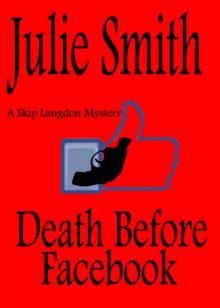 Death Before Facebook (Skip Langdon #4) (Skip Langdon Mystery) (The Skip Langdon Series)
Death Before Facebook (Skip Langdon #4) (Skip Langdon Mystery) (The Skip Langdon Series)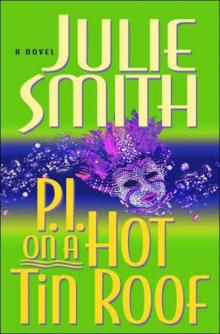 P.I. On A Hot Tin Roof
P.I. On A Hot Tin Roof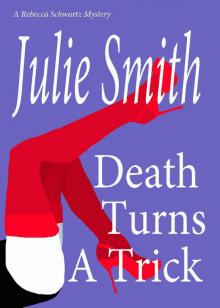 Death Turns A Trick (Rebecca Schwartz #1) (A Rebecca Schwartz Mystery) (The Rebecca Schwartz Series)
Death Turns A Trick (Rebecca Schwartz #1) (A Rebecca Schwartz Mystery) (The Rebecca Schwartz Series)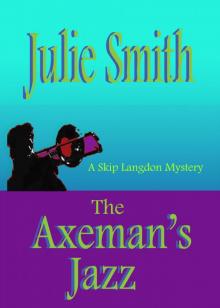 The Axeman's Jazz (Skip Langdon Mystery Series #2) (The Skip Langdon Series)
The Axeman's Jazz (Skip Langdon Mystery Series #2) (The Skip Langdon Series)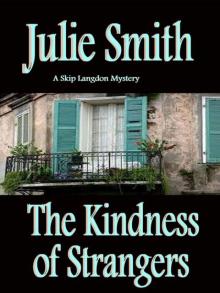 The Kindness of Strangers (Skip Langdon Mystery #6) (The Skip Langdon Series)
The Kindness of Strangers (Skip Langdon Mystery #6) (The Skip Langdon Series)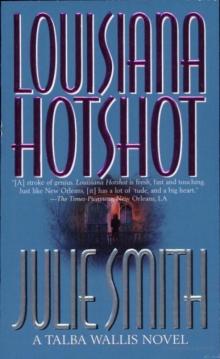 Louisiana Hotshot
Louisiana Hotshot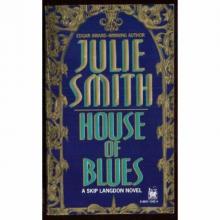 House of Blues
House of Blues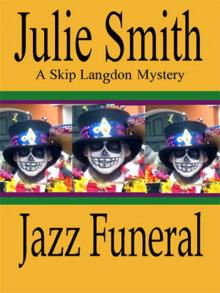 Jazz Funeral (Skip Langdon #3) (Skip Langdon Mystery) (The Skip Langdon Series)
Jazz Funeral (Skip Langdon #3) (Skip Langdon Mystery) (The Skip Langdon Series)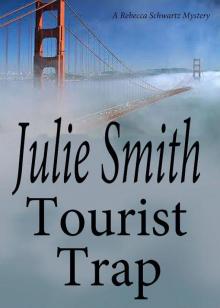 Tourist Trap (Rebecca Schwartz #3) (A Rebecca Schwartz Mystery) (The Rebecca Schwartz Series)
Tourist Trap (Rebecca Schwartz #3) (A Rebecca Schwartz Mystery) (The Rebecca Schwartz Series)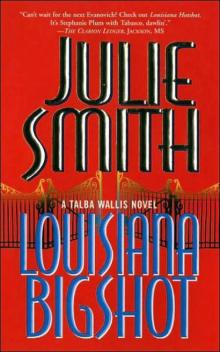 Louisiana Bigshot
Louisiana Bigshot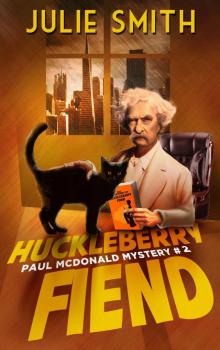 Huckleberry Fiend
Huckleberry Fiend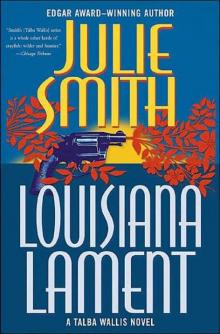 Louisiana Lament
Louisiana Lament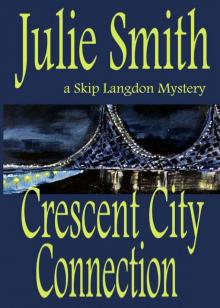 Crescent City Connection (Skip Langdon Mystery #7) (The Skip Langdon Series)
Crescent City Connection (Skip Langdon Mystery #7) (The Skip Langdon Series)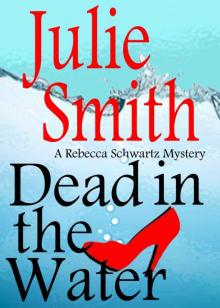 Dead In The Water (Rebecca Schwartz Mystery #4) (The Rebecca Schwartz Series)
Dead In The Water (Rebecca Schwartz Mystery #4) (The Rebecca Schwartz Series) True-Life Adventure
True-Life Adventure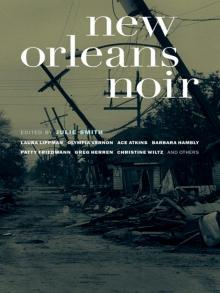 New Orleans Noir
New Orleans Noir